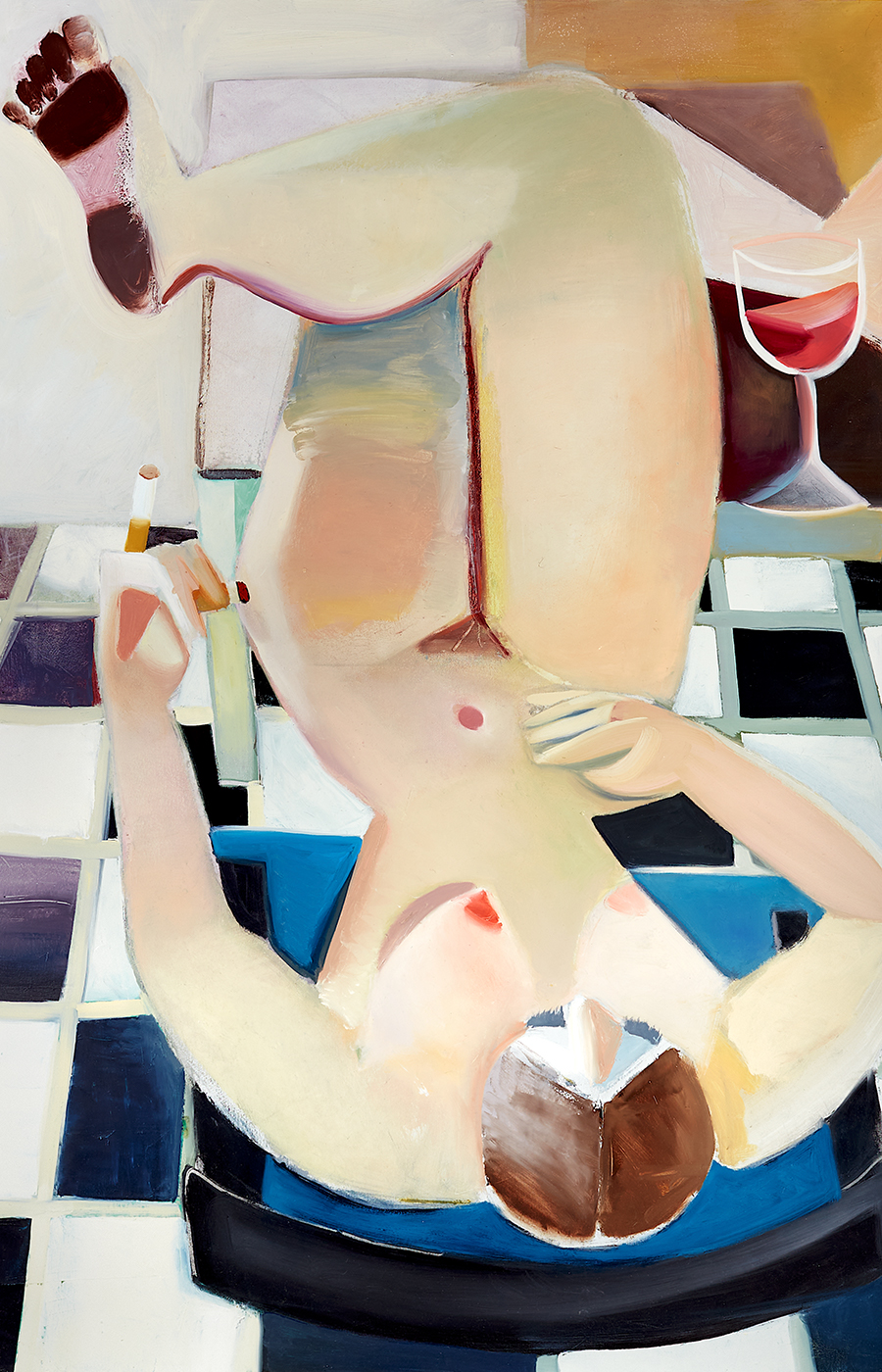[BP] When I interviewed Cecily Brown about her bather paintings she pointed out that our notion of bathers now is worlds apart from how a painter like Cezanne depicted them.
[DO] I’m interested in art historical tropes, so the swimming pool in my work is a stand in for the classical lake or stream. The scene tends to be cropped, with only the suggestion of a pool, with the blue of the water slightly off from the aquamarine you’d see in real life. The positioning of the figures – the languid nature of the poses – is definitely a reference to a 19th century setting which no longer exists; a bather today takes on an almost aspirational feel.
[BP] That’s especially true living in New York City where even a bathtub is seen as a kind of luxury. I wanted to ask you why so many of the women in your paintings have dirty feet? Someone else said that maybe it’s a nod to the famous Caravaggio painting of a Madonna and Child where Mary has dirty feet.

[DO] That was not at the forefront of my thinking when I painted the first dirty feet. It’s more of a studio notation. I often walk around my studio barefoot and my feet end up looking disgusting. I see it almost as a penitent gesture, like St Francis taking off his shoes before he prays. The religious connotation is a show of humility.
[BP] Which is in direct contrast to someone like Matisse who would get dressed up to paint because he believed art-making was an aesthetic experience and so the painter should present themselves to the canvas in attire befitting the occasion.
[DO] Which is still very ritualistic. I like quoting in the paintings unplanned studio habits in the which have now turned into intentional studio rituals. It’s almost a form of superstition. I think a lot of artists are superstitious.
[BP] Give me an example.
[DO] My friend Nikki Maloof and I will sometimes joke that certain stretcher bars are cursed if they’ve had a bad painting on them.
[BP] You have a lot of cigarettes in your paintings. Is that because you miss smoking? I know Dike Blair will have cocktails and cigarettes in his work, almost hoping that if he paints them then he won’t have to consume them in real life.
[DO] [sapcer] For me, cigarettes and candles are durational, which makes them interesting to paint. We know as viewers where to situate ourselves on a recognizable timeline. Almost like a lit fuse on a bomb—you know how long it’s supposed to last.
Read the full interview on Muse September Issue.









